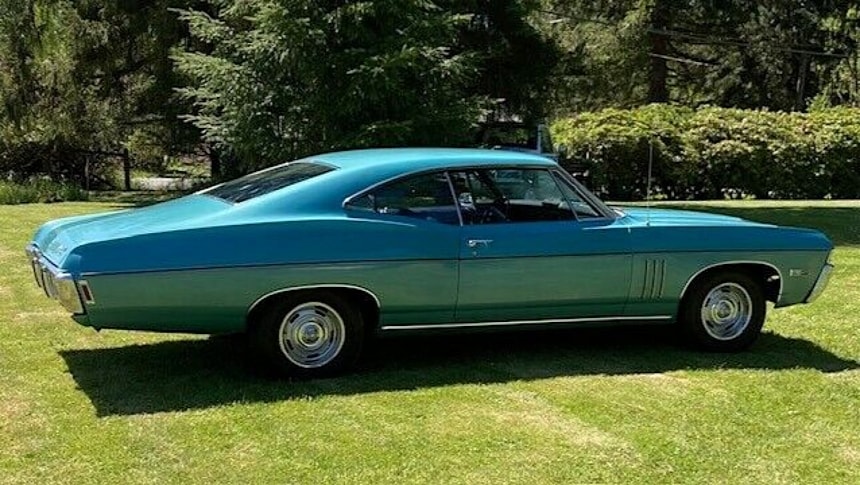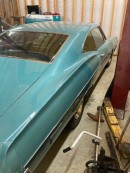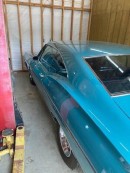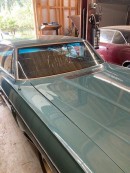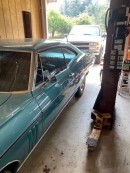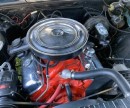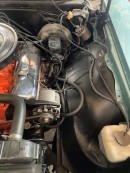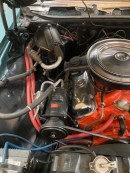When the late sixties are considered concerning production cars' horsepower prowess, the generally accepted opinion is that the second-generation Hemi, with its 426 cubic inches (seven liters) and 425-horse punch, was the king. And it was true – the elephant was a ‘hellephant’ that bowed to no one. However, Chevrolet had a contender that didn’t take off its air cleaner lid when a Hemi drove by.
Chevrolet’s 427 big-block behemoth came around in the early sixties (anyone remembers the Z-11 Impalas of December 1962-January 1963?) but made its name in 1966 (and the following years). The 425-horse 427-cube motor was available in full-size Chevrolets (but also on the Corvette), and it more than gave the Hemi a run for its money.
In 1968, however, sales literature omitted the big-block’s most powerful variant from the lineup. This may be the most probable reason why, out of a total production of 710,900 Impalas (with 38,210 of them coming in the Super Sport guise), only 1,778 had the SS 427 in them. This is where it gets confusing (maybe more than a little bit): there were three possibilities to have an Impala with a 427 V8.
Number One: order a regular model with the big-block. Number Two: order an Impala SS with the 427. Number Three: Order both the SS package on an Impala and the SS 427 package. That’s right, the 427 could be offered as part of a separate performance option, which wasn’t directly linked to the Super Sport choice.
The SS 427 cars didn’t have an ‘Impala’ badge, script, writing, or any other form of identification. Instead, ‘SS 427’ was slapped on the grille, deck lid, and front fenders (with the three digits in red). For some reason, the sales brochures only advertised the more domestic 385-horsepower variant, leaving the 425-hp under wraps. However, it appeared on the dealers’ order sheet – thankfully.
Unfortunately, a more detailed breakdown on the 1,778 SS 427 Impalas is not available, so we don’t know how many had the 385-hp V8 and how many could flick a Hemi right in the dual quads. With history not on our side, the next best thing is to rejoice when such a rare bird (regardless of horsepower feather) starts chirping around, looking for a new owner.
And if it’s a low mileage, we could call it a jackpot, right? Thirty-nine thousand miles (62,764 kilometers) is still a relatively short road life for a 56-year-young Impala with an SS 427. It has the 385-hp motor, as we can tell by the 5,500 RPM-redline tachometer. The seller isn’t a man of many words: ‘1968 impala ss 427, 4sp, ac, factory disc brake, factory gauges, am/fm, original rebuilt motor, original color, new exhaust, excellent interior, (phone number here) for questions.’ (Author's note: the quote is exact, right down to the spelling).
So, it’s a four-speed manual transmission 1968 Chevrolet Impala with air conditioning (call if you’re interested in its operating state), disc brakes on the front (and a power booster), bucket seats, and a $32,100 high bid. Maybe not as powerful as a same-year Hemi, but better than a contemporary 440 Magnum or Super Commando. I am not putting the Cobra Jet in this comparison because Ford outright lied to everyone about that fabulous engine, saying it made only 335 horsepower.
In 1968, however, sales literature omitted the big-block’s most powerful variant from the lineup. This may be the most probable reason why, out of a total production of 710,900 Impalas (with 38,210 of them coming in the Super Sport guise), only 1,778 had the SS 427 in them. This is where it gets confusing (maybe more than a little bit): there were three possibilities to have an Impala with a 427 V8.
Number One: order a regular model with the big-block. Number Two: order an Impala SS with the 427. Number Three: Order both the SS package on an Impala and the SS 427 package. That’s right, the 427 could be offered as part of a separate performance option, which wasn’t directly linked to the Super Sport choice.
The SS 427 cars didn’t have an ‘Impala’ badge, script, writing, or any other form of identification. Instead, ‘SS 427’ was slapped on the grille, deck lid, and front fenders (with the three digits in red). For some reason, the sales brochures only advertised the more domestic 385-horsepower variant, leaving the 425-hp under wraps. However, it appeared on the dealers’ order sheet – thankfully.
Unfortunately, a more detailed breakdown on the 1,778 SS 427 Impalas is not available, so we don’t know how many had the 385-hp V8 and how many could flick a Hemi right in the dual quads. With history not on our side, the next best thing is to rejoice when such a rare bird (regardless of horsepower feather) starts chirping around, looking for a new owner.
And if it’s a low mileage, we could call it a jackpot, right? Thirty-nine thousand miles (62,764 kilometers) is still a relatively short road life for a 56-year-young Impala with an SS 427. It has the 385-hp motor, as we can tell by the 5,500 RPM-redline tachometer. The seller isn’t a man of many words: ‘1968 impala ss 427, 4sp, ac, factory disc brake, factory gauges, am/fm, original rebuilt motor, original color, new exhaust, excellent interior, (phone number here) for questions.’ (Author's note: the quote is exact, right down to the spelling).
So, it’s a four-speed manual transmission 1968 Chevrolet Impala with air conditioning (call if you’re interested in its operating state), disc brakes on the front (and a power booster), bucket seats, and a $32,100 high bid. Maybe not as powerful as a same-year Hemi, but better than a contemporary 440 Magnum or Super Commando. I am not putting the Cobra Jet in this comparison because Ford outright lied to everyone about that fabulous engine, saying it made only 335 horsepower.
